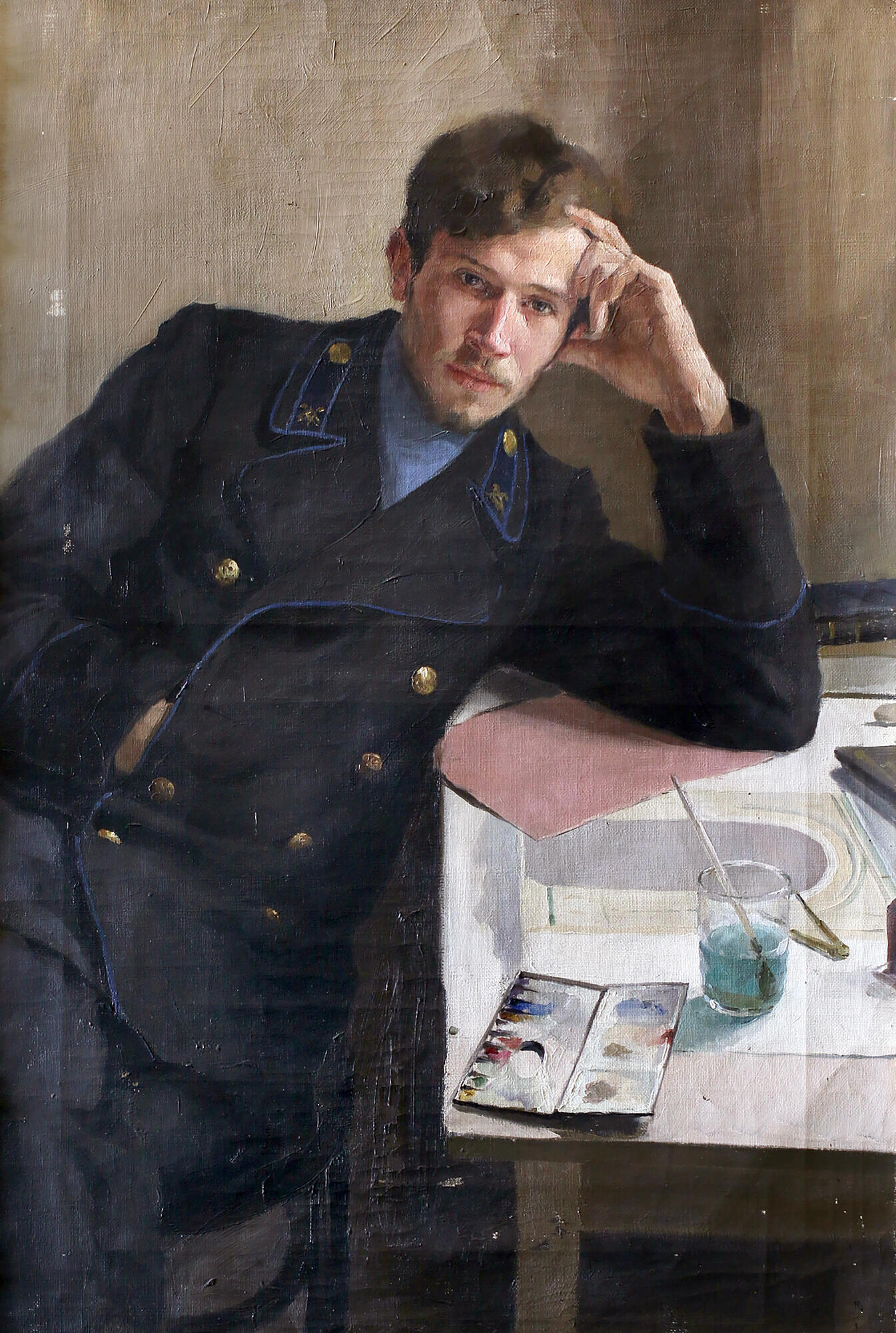The exhibition “Teacher and Students” of the Krasnoyarsk Museum of Local Lore presents a portrait of the architect Leonid Chernyshev dressed in the uniform of a student of the Moscow School of Painting, Sculpture and Architecture. The painting was created by Orest Georgievich Sokolov, the architect’s classmate at the school.
Leonid Chernyshev was born on March 15, 1875 in a peasant family in the village of Sukhobuzimskoye, Yeniseysk Governorate. In the early 1880s the family moved to Krasnoyarsk. Leonid entered the men’s gymnasium, where he met and became friends with the future artist Dmitry Karatanov.
The Karatanovs’ house was home to Mikhail Alexandrovich Rutchenko, an art teacher at the Krasnoyarsk Men’s Gymnasium, who encouraged the young men to take up drawing. A friend of Chernyshev’s father, the artist Vasily Surikov, also actively promoted these studies. He saw Leonid’s talent and persistently advised his friend to send his son to study in Moscow.
After graduating from the third grade of the men’s gymnasium, Leonid Chernyshev followed Surikov’s advice and entered the architectural department of the Moscow School of Painting, Sculpture and Architecture, one of the main art schools of the Russian Empire. Upon completion of the course, Chernyshev became a non-matriculated student, and later a student of the Higher Art School at the Imperial Academy of Arts in St. Petersburg, in the class of Professor Alexander Pomerantsev. The young architect underwent practical training in 1903–1904 at the construction and decoration of the Moscow hotel “Metropol” under the guidance of the architect Pavel Visnevsky.
In March 1906, Chernyshev returned to Krasnoyarsk
and contributed a lot to embellishing the architectural look of the city. His
main works in Krasnoyarsk are his own house in Art Nouveau style, the house of
A.V. Telegin, the mansion of notary I.A. Itsyn, and the house of the Merchant
Society as well as the Museum of Local Lore of Krasnoyarsk, built in Egyptian
style. Leonid Alexandrovich designed the museum building and personally
supervised the construction works in 1914–1915 and 1926–1929. In one of his
letters in 1909 Vasily Surikov wrote:


